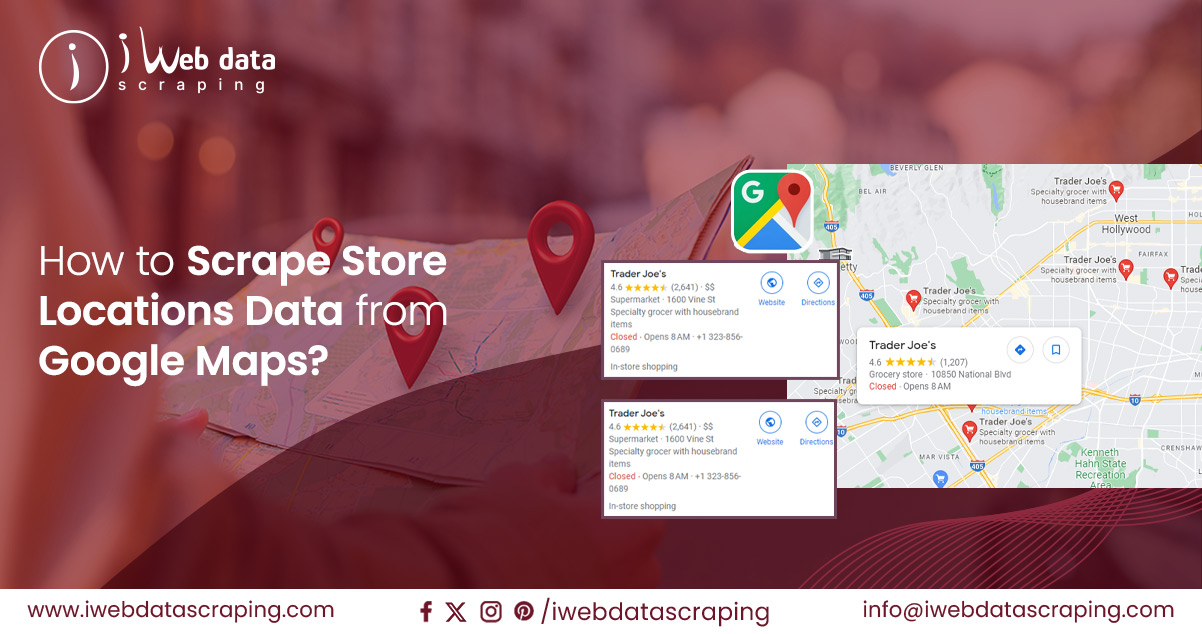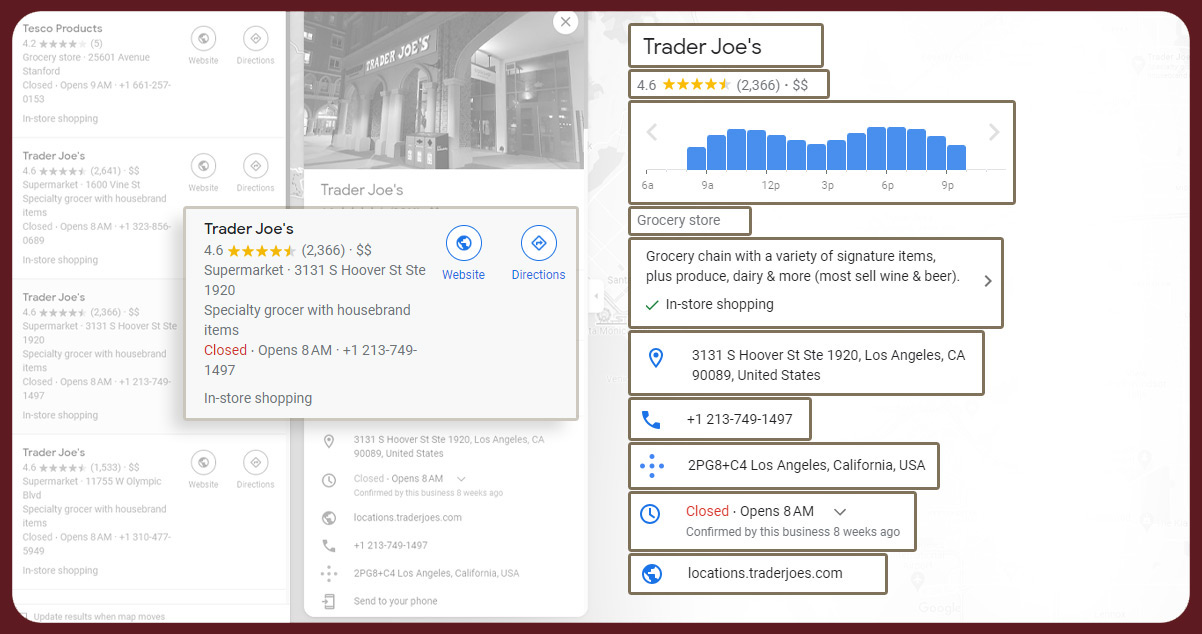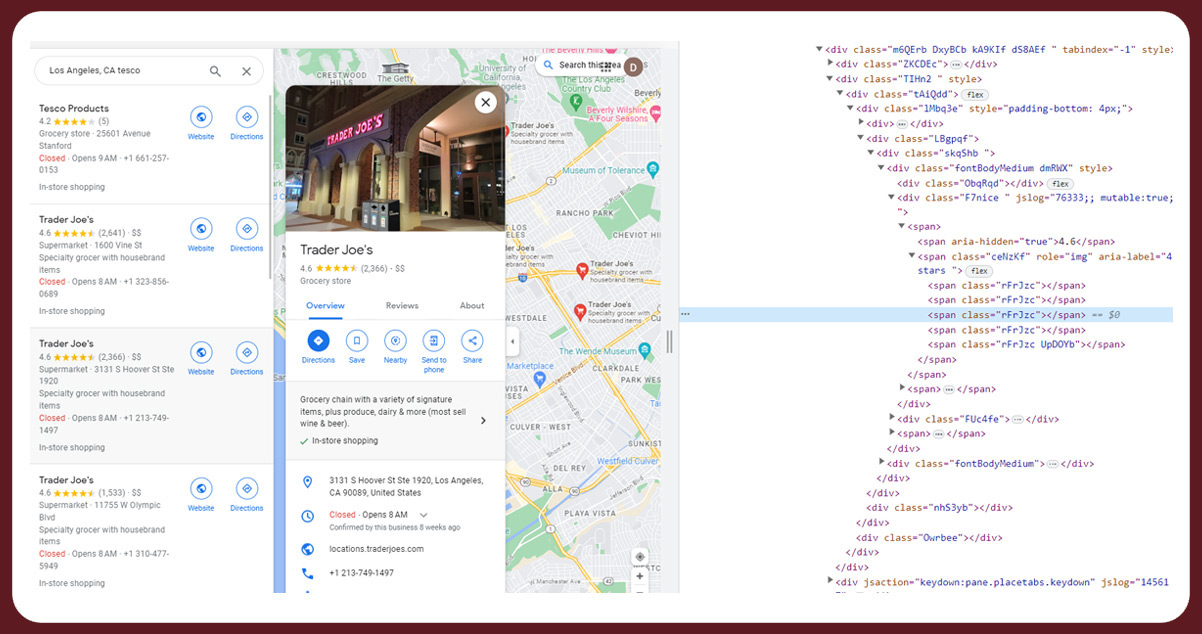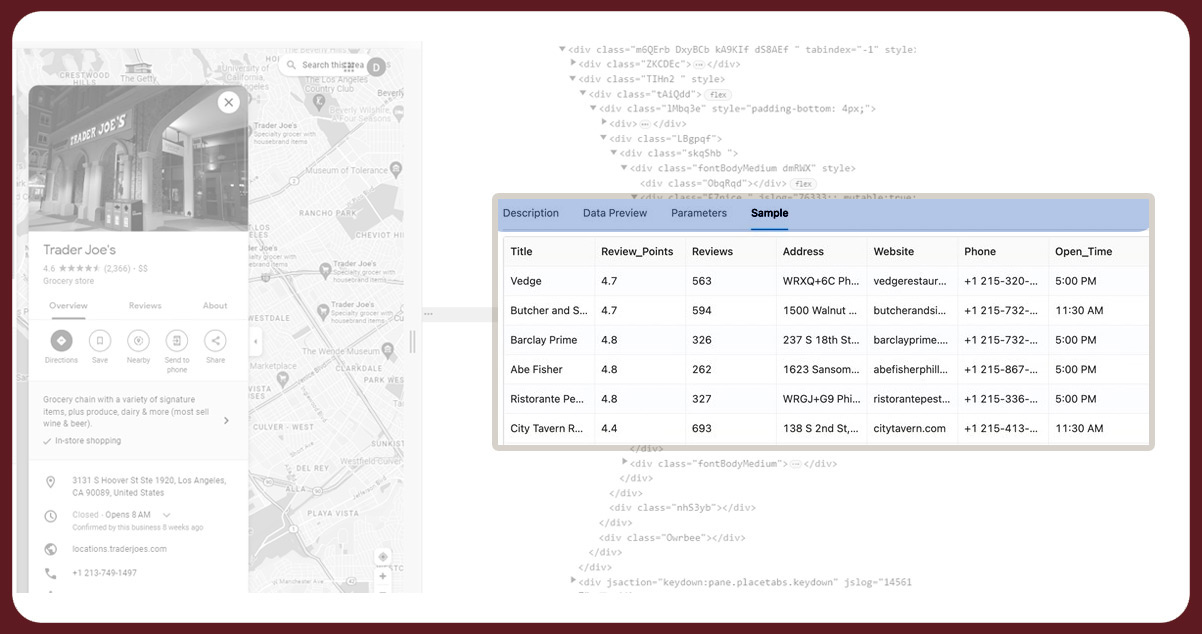How To Scrape Store Locations Data From Google Maps
How To Scrape Store Locations Data From Google Maps?

Google Maps harbors a wealth of important business information, offering details and opportunities for various purposes. Extracting data from Google Maps is essential for businesses, serving SEO enhancement, market analysis, local competitor understanding, and more. If you’re seeking to scrape business data from Google Maps, here’s a brief guide to initiate the process:
What Kinds of Information Can You Extract from Google Maps through Scraping?

You can retrieve business information, including business names, addresses, ratings, phone numbers, websites, operating hours, review counts, zip codes, latitude, and longitude. Store location data extraction is precious for online marketers and digital service providers, facilitating business outreach and product promotion. It’s a highly efficient method for lead generation, connecting with new clientele, and aiding individuals in discovering the best local businesses. Moreover, Google Maps provides an API that enables developers to access information on Google Places, routes, and maps. This Google Maps API scraping allows data retrieval from all businesses listed on Google Maps, making it a powerful tool for information gathering and analysis.
The Legality of Extrac ting Data from Google Maps

Google Maps discourages web scraping and specifies no scraping of its content for purposes outside the Google Map Service. Nevertheless, scraping retail locations’ publicly accessible data, including from Google Maps, is legally permissible as it does not infringe upon Google Maps’ privacy rights. The permissibility of scraping location data from Google Maps hinges on the type of extracted data and the intended use of this publicly available information.
Why Scrape Store Locations from Google Maps?

Scraping store locations from Google Maps offers several compelling reasons:
Business Expansion: For businesses looking to expand their physical presence, scraping store locations provides a list of potential areas for new stores or outlets.
Market Analysis: Extracting business addresses aids in market research by identifying areas with a high concentration of competitors and potential gaps in the market.
Targeted Marketing: Businesses can use location data to target marketing efforts, such as localized advertising and promotions, to reach specific geographic segments.
Competitive Intelligence: Monitoring competitors’ store locations helps businesses understand their market reach and competitive strategies.
Franchise Development: For franchises, scraping store location data from Google Maps is essential for tracking existing franchise locations and planning for future ones.
Logistics and Distribution: Scraping store listings assists in optimizing logistics and distribution networks by mapping the locations of suppliers, distribution centers, and retail outlets.
Customer Convenience: Providing store location information on websites or mobile apps enhances customer convenience and encourages in-store visits.
Real Estate and Site Selection: For real estate professionals and developers, web scraping store locations helps select site and property development decisions.
Business Partnerships: Businesses can identify potential partners, suppliers, or collaborators based on their proximity to specific store locations.
Data-Driven Decisions: Data on store locations empowers businesses to make data-driven decisions regarding expansion, marketing, and resource allocation.
Google Maps business data scraping services equip businesses with valuable insights for strategic planning, expansion, and market penetration, making it a valuable tool for decision-makers in various industries.
How to Scrape Store Locations from Google Maps?

- Define Data Requirements: Determine the specific business data you need, such as business names, addresses, phone numbers, websites, categories, reviews, ratings, or other relevant details.
- Select a Suitable Tool: Choose an appropriate web scraping tool. Options include Python libraries like Selenium or BeautifulSoup, specialized Google Maps data extraction software, or web scraping services.
- Review Google Maps’ Terms: Familiarize yourself with Google Maps’ terms of service to ensure compliance. Respect usage limits and adhere to ethical scraping practices.
- Set Search Parameters: Define search criteria, like location, industry, keywords, or filters, to narrow down the results to the specific business data you’re interested in
- Configure Scraping Environment: Install and set up the selected scraping tool or software. Ensure you have the necessary dependencies and permissions.
- Develop Scraping Script: Write a script to automate navigating Google Maps search results and extracting desired business data. Use the Google Maps data scraper features to locate and collect relevant information from each listing.
- Handle Pagination: If multiple pages of results exist, implement pagination handling in your script to navigate through them. Be mindful of any result limits imposed by Google Maps.
- Clean and Validate Data: Clean and validate the extracted data for accuracy after scraping. Remove duplicates, perform data cleansing tasks, format addresses consistently, validate phone numbers and website.
- Store and Analyze Data: Save the extracted data in a structured format like a database or CSV file. Use data analysis tools to gain insights, identify patterns, and make informed business decisions.
- Respect Privacy and Legal Considerations: Ensure your scraping activity adheres to privacy laws and regulations. Only collect publicly available information and avoid any unauthorized or unethical practices.
Always prioritize responsible and ethical scraping practices, respecting both legal boundaries and the terms of service of the website you are scraping. Avoid overloading the server with excessive requests and follow best practices for web scraping.
Benefits of Using Google Maps for Businesses

Google Maps scraping is pivotal in helping small and local businesses generate new leads. Listing your business on Google Maps offers many advantages for small business owners, and it’s a cost-free opportunity. It enables potential customers to swiftly locate and access information about your business and its location. Additionally, Google Maps allows businesses to enhance their listings with photos and images, while Google reviews add credibility.
Incorporating your business into Google Maps’ directory significantly boosts visibility and fosters business growth. It simplifies discovering new business leads, whether you’re targeting restaurants, florists, plumbers, or any other local service. With Google Maps, you can precisely target businesses based on location, zip code, and other criteria.
Google Maps listings provide comprehensive contact details, including business names, addresses, phone numbers, and websites. This wealth of information is a goldmine for sales and marketing professionals seeking to connect with small or local businesses and generate fresh leads. The process is straightforward. Conduct keyword and location-based searches on Google Maps, access the business listings, and export the data to Excel or another CRM system.
Get in touch with iWeb Data Scraping today for more information! Whether you require web scraping service and mobile app data scraping, we’ve covered you. Don’t hesitate to contact us to discuss your specific needs and find out how we can help you with efficient and reliable data scraping solutions.
